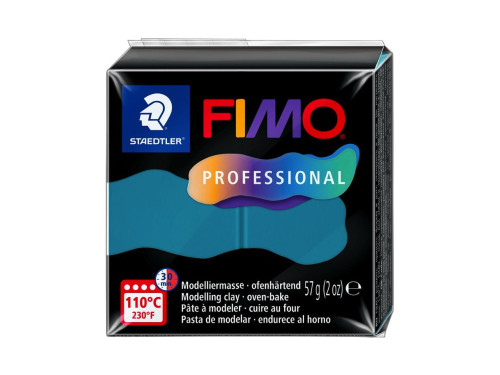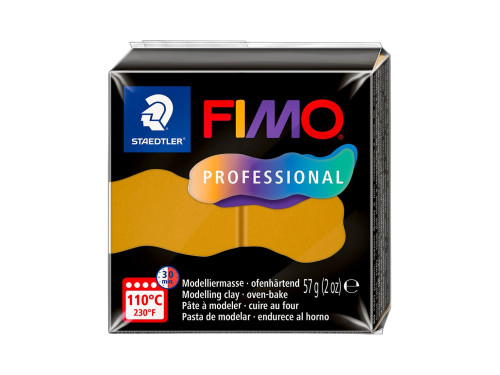Ceramics is one of the oldest forms of art - it was used to create small sculptures already 45,000 years ago! There are many different types of modeling compounds, their colors and finishing options. Modeling materials include natural clay, modeling clay, thermosetting mass, self-hardening clay, modeling paste, gypsum, as well as paper mass (papier mache). They allow you to create figurines, sculptures, jewelry and everyday objects - e.g. cups, plates. They give creative freedom and allow you to create objects of any shape, size, color and purpose. The appearance of clay ceramics will be mainly influenced by the content of fireclay and the color of the clay. Fireclay is the ground remains of dried clay that are added to the mass to make it rough. Natural colors of clay are very popular: white, sand, gray, terracotta. You can also modify it yourself, thanks to pigments dedicated to ceramic masses.
Ready-made modeling compounds with vivid and intense colors are also available on the market - for example, FIMO thermosetting compounds. FIMO materials are great for creating small items, jewelry, figurines, glass decorations, porcelain, flowers, animals, home decorations, millefiori art and many others. FIMO colors are vivid and can be mixed with each other. There are FIMO materials in a uniform color, shiny, glowing in the dark, pearly, metallic, granite, transparent, glitter. FIMO thermosetting materials are also available in various series - Soft, Professional, Doll Art, Basic, Leather Effect, Air Basic, Air Light, Fashion, Effect, Natural and Brilliant. They are suitable for burning in a home oven and are safe for school children.
Modeling masses can be fixed in various ways. Natural sculptural clay requires firing in a kiln at a very high temperature of about 1000 degrees Celsius. However, there are also other modeling masses and clays that do not need to be fired in specialized furnaces and will work great at home.
Thermosetting masses should be hardened in an oven - for example FIMO masses. After firing at several hundred degrees at home, we obtain fully functional items - without the need for firing in a specialized furnace. Particular attention is paid to air masses, which can be "baked" in microwave ovens for a few minutes - after this time they are fully hardened.
There are also self-curing masses that can be left to dry - usually around 24 hours - for example: papier mâché, Jovi clays and model pastes, DAS modeling compounds, Keraplast clays, Darwi clays and masses, as well as plaster (gypsum) in powder, which is especially useful in using silicone molds.
Such undemanding proposals will be perfect for working with children. Sculpting and molding from clay and other modeling masses develops fine motor skills and has a relaxing effect. It improves the manual dexterity of the youngest and provides a lot of fun, while developing their creativity and imagination.
There are various techniques for molding clay and modeling masses. One of them is the roller method - clay should be made into rollers, then put on top of each other and put together. You can also cast dishes in plaster molds and roll on a potter's wheel. Other methods of sticking are, for example, sticking with patches or sticking out.
It is worth getting accessories and tools that will facilitate the work with the mass of modeling. Spatulas, spatulas and knives will be useful for sticking, with which you can cut the mass and shape its shape while it is still plastic. The modeling squeezer will give them an interesting form, and the acrylic roller will allow you to create a thin, smooth layer of modeling mass, from which you can cut out any shapes using molds for clay and modeling masses. After hardening, you can use a sponge for grinding modeling masses so that the surface of the object is perfectly smooth.
Products made of modeling mass should be protected with varnish. There are transparent, matte, semi-matte and glossy varnishes, which make the products made of modeling mass durable and resistant to damage.
Ceramics is one of the oldest forms of art - it was used to create small sculptures already 45,000 years ago! There are many different types of modeling compounds, their colors and finishing options. Modeling materials include natural clay, modeling clay, thermosetting mass, self-hardening clay, modeling paste, gypsum, as well as paper mass (papier mache). They allow you to create figurines, sculptures, jewelry and everyday objects - e.g. cups, plates. They give creative freedom and allow you to create objects of any shape, size, color and purpose. The appearance of clay ceramics will be mainly influenced by the content of fireclay and the color of the clay. Fireclay is the ground remains of dried clay that are added to the mass to make it rough. Natural colors of clay are very popular: white, sand, gray, terracotta. You can also modify it yourself, thanks to pigments dedicated to ceramic masses.
Ready-made modeling compounds with vivid and intense colors are also available on the market - for example, FIMO thermosetting compounds. FIMO materials are great for creating small items, jewelry, figurines, glass decorations, porcelain, flowers, animals, home decorations, millefiori art and many others. FIMO colors are vivid and can be mixed with each other. There are FIMO materials in a uniform color, shiny, glowing in the dark, pearly, metallic, granite, transparent, glitter. FIMO thermosetting materials are also available in various series - Soft, Professional, Doll Art, Basic, Leather Effect, Air Basic, Air Light, Fashion, Effect, Natural and Brilliant. They are suitable for burning in a home oven and are safe for school children.
Modeling masses can be fixed in various ways. Natural sculptural clay requires firing in a kiln at a very high temperature of about 1000 degrees Celsius. However, there are also other modeling masses and clays that do not need to be fired in specialized furnaces and will work great at home.
Thermosetting masses should be hardened in an oven - for example FIMO masses. After firing at several hundred degrees at home, we obtain fully functional items - without the need for firing in a specialized furnace. Particular attention is paid to air masses, which can be "baked" in microwave ovens for a few minutes - after this time they are fully hardened.
There are also self-curing masses that can be left to dry - usually around 24 hours - for example: papier mâché, Jovi clays and model pastes, DAS modeling compounds, Keraplast clays, Darwi clays and masses, as well as plaster (gypsum) in powder, which is especially useful in using silicone molds.
Such undemanding proposals will be perfect for working with children. Sculpting and molding from clay and other modeling masses develops fine motor skills and has a relaxing effect. It improves the manual dexterity of the youngest and provides a lot of fun, while developing their creativity and imagination.
There are various techniques for molding clay and modeling masses. One of them is the roller method - clay should be made into rollers, then put on top of each other and put together. You can also cast dishes in plaster molds and roll on a potter's wheel. Other methods of sticking are, for example, sticking with patches or sticking out.
It is worth getting accessories and tools that will facilitate the work with the mass of modeling. Spatulas, spatulas and knives will be useful for sticking, with which you can cut the mass and shape its shape while it is still plastic. The modeling squeezer will give them an interesting form, and the acrylic roller will allow you to create a thin, smooth layer of modeling mass, from which you can cut out any shapes using molds for clay and modeling masses. After hardening, you can use a sponge for grinding modeling masses so that the surface of the object is perfectly smooth.
Products made of modeling mass should be protected with varnish. There are transparent, matte, semi-matte and glossy varnishes, which make the products made of modeling mass durable and resistant to damage.




































